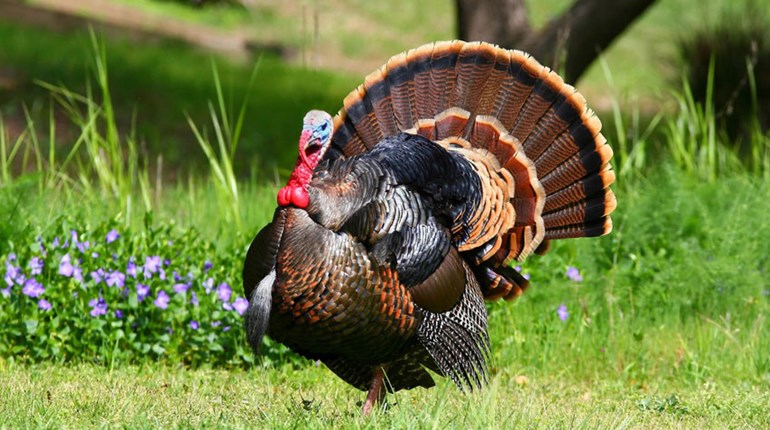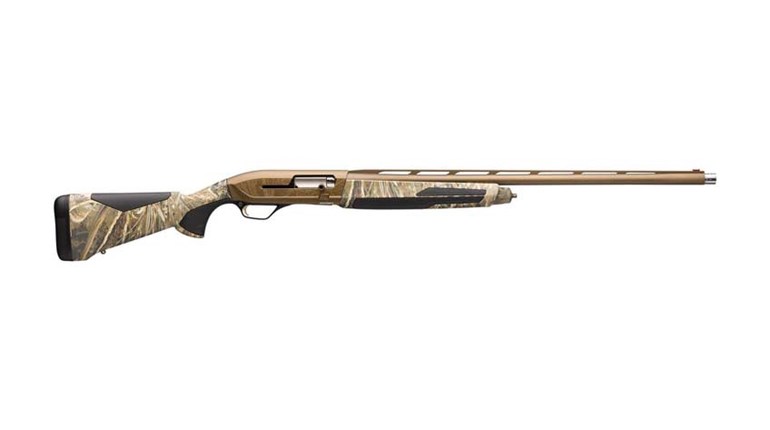If you haven’t the space, finances nor stamina to keep two hunting dogs—one that points, and one that flushes and retrieves—then get in line for a versatile hunting dog. To paraphrase a line from Tolkien in The Hobbit: One dog to rule them all.
Well, that’s the idea. And it makes perfect sense. If some dogs scent and point birds beautifully and others retrieve them from the gaping maw of Hades, why shouldn’t one do it all? Amazingly, many can. And do. Consider these super breeds:
German Shorthaired Pointer
Liver- or black-and-white; patched, solid or ticked; and, no surprise, sleekly short-haired. GSPs weigh 45 to 70 pounds and are generally lean, but muscular and solid, often with deep, broad chests. Tails are traditionally docked. Powerful and energetic, they hunt fairly close but usually not extremely fast. They take to water readily but are a bit thinly dressed for extended hunts in the cold.
German Wirehaired Pointer
A coarsely-haired version of the shorthair with funky whiskers around the muzzle. Marked and colored like shorthairs, too. Long-legged, deep-chested and weighing 50 to 70 pounds with a docked tail. The breed’s thicker coat makes it a better option for water work. Enthusiastic and hard working, if not stylish and flashy.
Wirehaired Pointing Griffon
Similar to the German wirehair but usually even hairier, especially around the face. Gray and liver, flecked to patched, giving it a dirty gray appearance. Most run 40 to 60 pounds and are determined trackers, boon companions and easily trained. Outgoing and friendly. Eager water dogs with docked tails. Best current bloodlines spring from dogs brought out of Czechoslovakia after the fall of the Iron Curtain.
Spinone
No, not ice cream. A heavier (60 to 85 pounds) Italian version of the griffon. Or so it looks, although there is much more white in the coats of many. “Orange” or roan markings are common. This type of course-haired, general purpose dog was commonly bred throughout Europe, with regional variants evolving over time. In appearance spinones have a deeper muzzle and heavier head than griffons or wirehairs. Rugged and sturdy, close-working and deliberate. Mild-mannered but sometimes stubborn, they’ll nonetheless tackle nature’s worst and bring back the goods. Tails are docked.
Brittany Spaniel
Soft and silky like a setter, Brittanys lean more toward the pure pointing breeds in performance. Commonly 30 to 40 pounds, white with liver or dark orange patches, and a docked tail. Generally range wider and cover more ground than most versatile dogs. Thick coats help with the cold. Properly trained, Brits will take to the water for early season ducks. A bit small for big geese, but they’ll bring them back.
Pudelpointer
An old breed easily confused with German wirehairs. Chestnut brown with dense, wiry hide, docked tail, muzzle whiskers and plenty of heart. Weighs 45 to nearly 70 pounds. Muscular, deep-chested, long-legged. Has been known to out-retrieve Labradors and out-point many setters, but does so methodically, usually staying close.
Small Munsterlander
Looking something like an English setter, this 500-year-old, all-purpose German breed is white with liver patches and a flowing tail. Hair is straight and soft. The 35- to 50-pound dogs were bred to do it all, including water retrieving and even baying on scent trails of ground game.
Vizsla (pictured)
The vast, grassy plains of Hungary produced horses, gray partridge and this ancient, red, sleek-haired dog, one of the smallest pointer-retrievers. It came to the U.S. after WWII and has been winning converts ever since. Energetic, vizslas often run big with a ground-eating lope that is a joy to watch. Like many of the sleek-haired versatile breeds, they have no insulating under fur. Docked tail.
Weimaraner
Has the most unusual mouse gray or silver color of any dog, with sleek, extremely short hair. Docked tail. Lean, but tall and long at 50 to 80 pounds. Once used to hunt stags but now modified for birds. Energetic, big-running dogs.
Pointing Labrador
What the heck, if we can list retrieving pointers, why not pointing retrievers? Anyone who’s owned a lab knows they can be trained to do just about anything but sing arias, and they’ll try that, too. Those with a genetic predisposition to point can be reinforced to do so. They aren’t going to sweep a big grass field with the efficiency of a Brittany or GSP, but they’ll put birds in the bag.
Before you join the ranks of nitpickers who devalue versatile dogs for being jacks of all trades and masters of none, consider your true needs as a hunter. Do you hunt a few pheasants, quail, ruffed grouse or partridge each fall? Do you pursue them in farm fields, forests, grasslands, brush thickets and cattail sloughs? Do you take a splash at ducks over decoys on the water and geese in the cornfields? Now and then do you wound a deer and need a sharp-nosed canine to sniff it out? Well, you’re not going to get some hard-charging, wave-busting Chesapeake Bay retriever to vacuum 2,400 acres of grassland in a morning or delicately point a covey of flighty gray partridge. And you aren’t going to send an English setter to retrieve ten mallards from an icy, wind-blown lake.
But a German wirehair could do all that.
It’s important to remember where specialized hunting dogs originated. Historically, hunting dogs were general-purpose camp followers trained to do everything from guarding the manor to herding the cattle. Only after we developed the tools and free time to make a gentlemanly pursuit of gamebirds did we subsequently breed “specialist” dogs fine-tuned for limited duty. That was back in the day when Lord Snootnosen puttered around his inherited estate while servants did all the work, leaving the lord to lavish time and attention on his dogs and other pursuits.
It made sense to genetically select big-running pointers when a hunter needed a dog to scour 10,000 acres for hidden grouse, crouching pheasants. And a barrel-chested, otter-tailed, big-hearted, oily-coated waterdog was just what the commercial waterfowler ordered. But…
Not many of us are lords of castles with a 50-dog kennel. Versatile breeds make sense. Such a dog will hunt fairly close and stick to it for hours, tolerate the kids, guard the house and sigh beside the sofa while you scratch his ears. Get a breed with thick under fur and you’ll have a dog that will take to water with joyful abandon, and haul big ducks and geese from it. Go ahead; train it to blood-trail wounded game and even chase bunnies. Everything is fair game when you have a hard-charging, sniffing, pointing, flushing, fetching, fur-and-feather’s worst nightmare Super Dog.





































